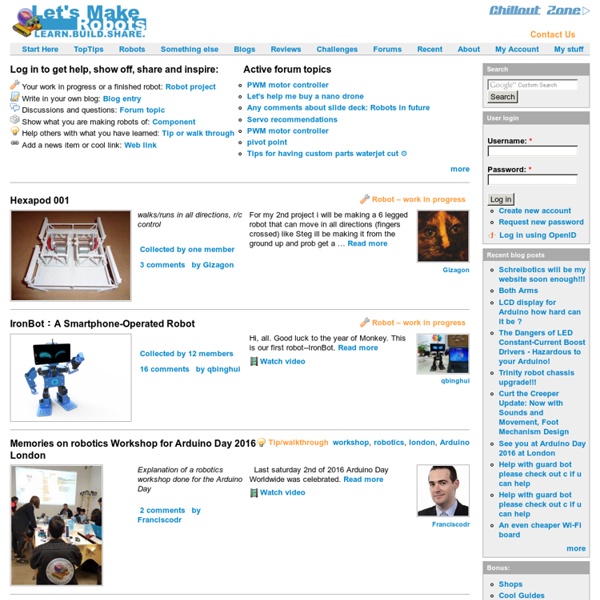



How to Create a Pneumatic System for (F.I.R.S.T) Robots This is an instructable primarily for next years members of the Scarlett Robotics team (4733), however; it will also apply to all first or second year FIRST robotics teams who have never used pneumatics, or to anyone who wants to add pneumatics to their own robots(may want to consider other sources for parts the ones that are allowed in the FIRST competitions are expensive). This isntructable contains the basics along with a few tips on speeding up flow rates. For those that don't know F.I.R.S.T (For Inspiration and Recognition of Science and Technology) programs are designed to show kids that science and technology are cool and fun, a message I think Instructables agrees with. Also if you need help for anything that I don't (or do) cover please post a comment or go to the Chief Delphi Pneumatics forum
Thai Chicken Satay Amount Measure Ingredient + Preparation Method ----------------------------------------------------------------------- 6 Chicken breast halves - boned, skinned -- and cut - into 1/2" wide strips -----MARINADE----- 1 Tablespoon Light brown sugar 1 Tablespoon Curry powder 2 Tablespoons Crunchy peanut butter 1/2 Cup Soy sauce 1/2 Cup Freshly squeezed lime juice 2 Garlic cloves -- minced Crushed dried chile peppers Robots: Al.I.S.E Here is my latest robot. Al.I.S.E is an Aluminum, Infrared Scanning Entity; or just an old-school style crank arm hexapod :) This project was based on the mechanicals of the "Hexapod Monster" kit I built and reviewed back in 2008. I scaled it up a little, and added 2 super torquey gear head DC motors I found at a surplus store in Minneapolis. Power comes from a 9.6v RC transmitter pack, along with a separate 9v for the BS2 microcontroller.
Shrediquette MM6 Small size and highly maneuvrable hexacopter for GoPro HD Hero recording & FPV Controller: TriGUIDE mini v2, Atmega328p @ 16 MHz, 5V Gyroscopes: 3*ADXRS610 Accelerometer: ADXL322 Control modes: Heading-hold or auto-level Receiver: ACT DSL-4ST Motors: Roxxy 2216-25 ESCs: Turnigy Plush 6A with I²C->PWM converters Props: 5x3 3-blade GWS Frame: GFK + aluminium tubes Camera: GoPro HD Hero (AV-out used for FPV) Battery: 3S, 2200 mAh Weight without camera and battery: 360g Motor shaft distance: 280mm Max. dimension: 407mm Endurance: 11-15 minutes No, it's not a spider... Spiders have eight legs. Believe me, I am a biologist ;-D .
Air-Powered Soft Robotic Gripper Update (1/24/2014): Important note about 3D printer materials added below. Read before you try this project! Update (11/22/2013): MUCH cheaper option added to the materials list to replace the squeeze bulbs. Thanks to the education staff at the Franklin Institute in Philadelphia, PA for pointing that out! Mead Made Easy: Contents Mead Made Easy: Contents Previous Next Table of contents Copyright 2009, Dave Polaschek. Last updated on Mon, 15 Feb 2010 14:09:09. How To Build A Soft Robot Hand In the field of soft robotics, engineers use squishy materials to make robots durable, flexible, and safer to operate around humans. Now intrepid DIYers can also bring life to squishy machines: Last September, Harvard University published an open-access Soft Robotics Toolkit online. Some of the materials and skills Harvard recommends may be beyond the reach of a typical garage roboticist. But with a little ingenuity, you can substitute cheaper parts and simpler techniques.
Ruth Stone Ruth Stone (June 8, 1915 – November 19, 2011) was an American poet, author, and teacher.[3] Life and career[edit] She was born in Roanoke, Virginia. She raised three daughters alone after her husband, professor Walter Stone, committed suicide in 1959. She wrote that her poems are "love poems, all written to a dead man" whose death caused her to "reside in limbo" with her daughters.
Soft robotics ‘toolkit’ features everything a robot-maker needs Do it yourself. (Photo by Eliza Grinnell, Harvard SEAS.) Cambridge, Mass. – September 19, 2014 – A new resource unveiled today by researchers from several Harvard University labs in collaboration with Trinity College Dublin provides both experienced and aspiring researchers with the intellectual raw materials needed to design, build, and operate robots made from soft, flexible materials.